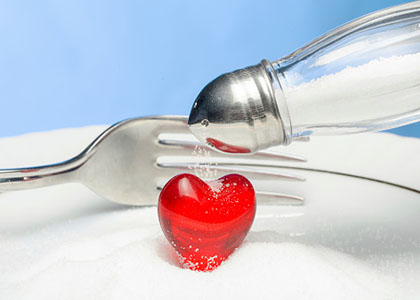
The Good Side of Salt
By Isabel Smith, MS, RD, CDN
What if I told you that there was a positive benefit to including salt in your diet, and that it was absolutely imperative for your health to eat some salt? Yes, that’s right- it’s true- your body absolutely needs some salt, every single day.
The reason that salt gets such a bad rap is because we have an overabundance of salt in our everyday life. Salt is used in most packaged and processed foods as a flavor agent and as a preservative, which means we end up getting much more of it than we need. Like most things, salt in moderation is absolutely healthful, but overuse turns a good thing bad.
What does salt do in your body?
- Regulates blood pressure.
Water follows salt, so more salt in the blood stream means more blood volume in the blood and higher blood pressure, which to a certain extent is imperative, but in excess can cause hypertension. - Nerve conduction and muscle contraction.
Salt plays an important role in sending nerve impulses for muscle contraction both for muscles you control and for muscles you don’t control like your heart and your diaphragm. - Maintains fluid balance.
Sodium along with potassium work together to maintain fluid balance inside and outside of the cells in the body, also helping to maintain hydration in muscles and tissues.
How much salt should you have?
According to the Centers for Disease Control (CDC), we need between 180-500 mg of sodium per day to keep our bodies working properly. Most people should aim to have between 1.5- 2 grams daily (1500-2000 mg) give or take depending on the person; however, on average, most people in the US consume about double that if not more.
How to cut back on added salt?
Following a diet of real food, cutting out artificial and processed foods will for most people allow for healthy blood pressure regulation. For any foods that you’re purchasing that are processed, read the label. Aim for lower sodium items, and of course load up on the fruits and vegetables, the healthy potassium in fruits and vegetables can counter act the effects of sodium on blood pressure; and for flavoring, use spices!
What type of salt should you use?
Each type of salt (table salt, Himalayan, sea salt) contains the same amount of sodium, but the major difference comes down to the amount of processing that each undergoes. Sea salt and other larger crystals undergo less processing than some finer-crystal salt like table salt. Another major difference is that some salt is iodized and others aren’t.
Iodine is an important nutrient that plays a role in the production of thyroid hormones and therefore is important to normal thyroid function . Iodized salt used to be the norm, but lately “designer” salts including fancy and seasoned sea salt is not fortified with iodine. Foods that are rich in iodine include fortified foods, salt, dairy products, and food from the sea like fish and seaweed.
When clients ask me what type of salt they should purchase I usually advise them to look for sea salt fortified with iodine if they do not consume foods that are naturally rich in it.
Key Tip: Look for minimally processed salt like sea salt, and aim for it to be fortified with iodine.